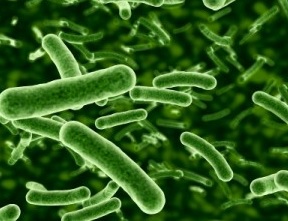There were 67 cases of legionnaires’ disease reported in Ireland during the period 2000 to 2007. There were five deaths due to legionnaires’ disease during this period
In April 2003 a woman died of Legionnaires Disease at Waterford Regional Hospital. After being admitted to hospital in March 2003 the patient was diagnosed as having Crohn’s Disease but a routine x-ray taken showed that the patient was also suffering from pneumonia. Further tests confirmed that she had Legionnaires Disease.
In 2008 RTE reported that two members of staff at the Allianz Insurance Company in Dublin had contracted the legionnaires disase. Tests linked the disease to one of the cooling towers used as part of the air conditioning system which was found to have high levels of the legionella bacterium.
What is Legionella?
Legionella is gram negative bacterium, including species that cause Legionellosis or Legionnaires’ disease, most notably L.pneumophilia. Legionnaires disease poses the greatest risk to people who are elderly, ill or immunocompromised.
Legionella transmission is via aerosols, and insulation of mist droplets containing the bacteria. Common source include:
- Cooling towers
- Domestic hot and cold water systems
- Emergency shower heads and showers
- Taps and water storage tanks
- Other water systems
A number of factors are required to create a risk of Legionella including; presence of the Legionella bacteria, water change rate, degree of exposure, presence of the numbers of people who may be at risk of exposure, water temperatures, total microbial count, enclosed or open systems.
What Creates the Risk of Legionella?
A number of factors are required to create a risk of Legionella, including;
- The presence of the Legionella bacteria,
- Source condition (clean- heavy contamination)
- Accessibility (Enclosed – open system)
- Acidity/ Alkalinity
- Conditions suitable for the survival of the organism, e.g. suitable temperature and a source of nutrients, e.g. limescale, rust, algae and other organic matter.
- Temperatures that affect the survival of Legionellae are as follows;
- From 70°C to 80°C – Disinfection range.
- At 66°C – Legionella die within 2 minutes.
- At 60°C – Legionella die within 32 minutes.
- At 55°C – Legionella die within 5-6 hours.
- From 50°C – 55°C – They can survive but do not multiply.
- From 20°C to 50°C – Legionella growth range.
- From 35°C to 46°C – Ideal growth range.
- Below 20°C – Legionella can survive but are dormant.
- Water change rate ( High- static)
- The presence (numbers) of people who may be at risk of exposure.
- Degree of exposure (hrs/week)
- A means of creating and disseminating breathable droplets, e.g. showers
- Total Microbial Count (cfu/ml)
For more information or to manage or assess risk or incidents of Legionella you should contact a reputable Legionella Risk Assessment Consultant.

